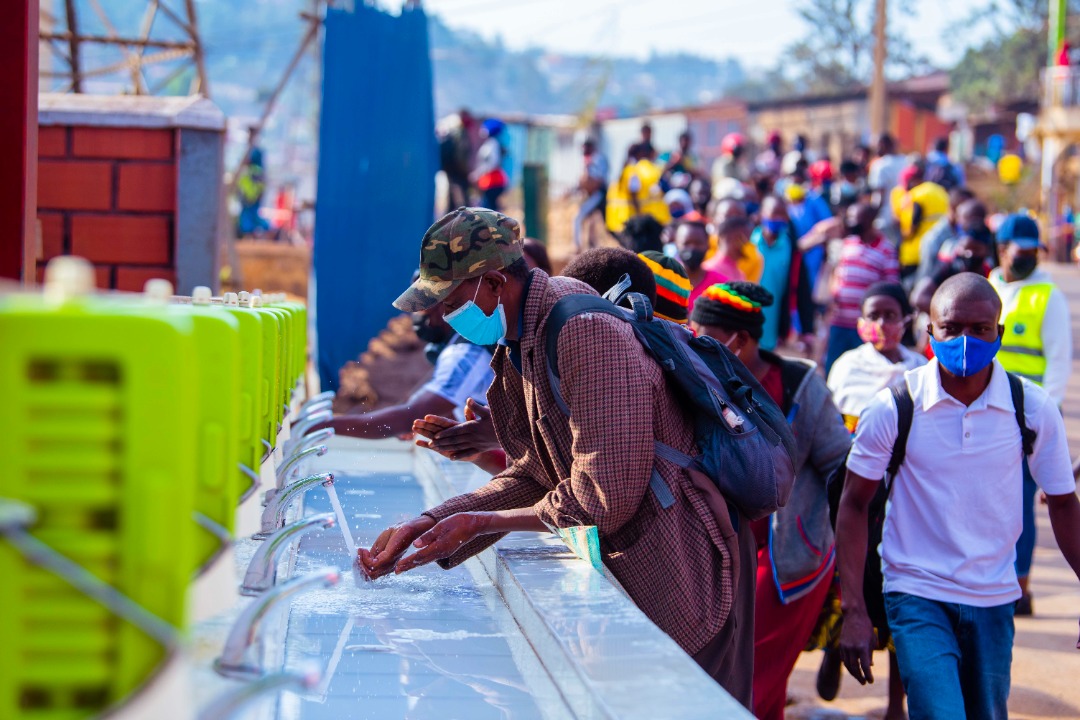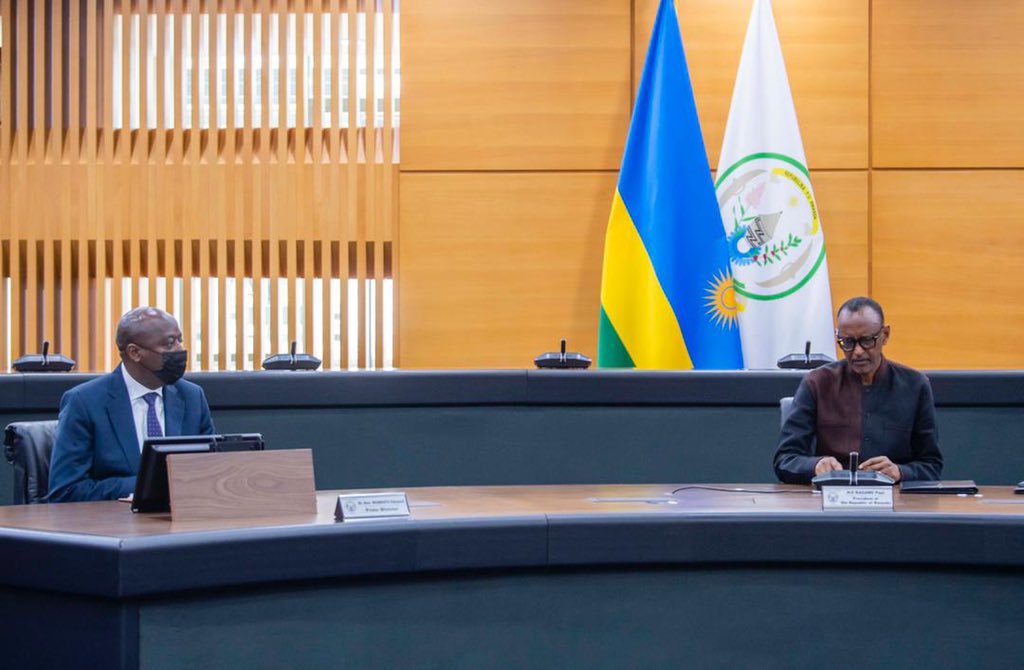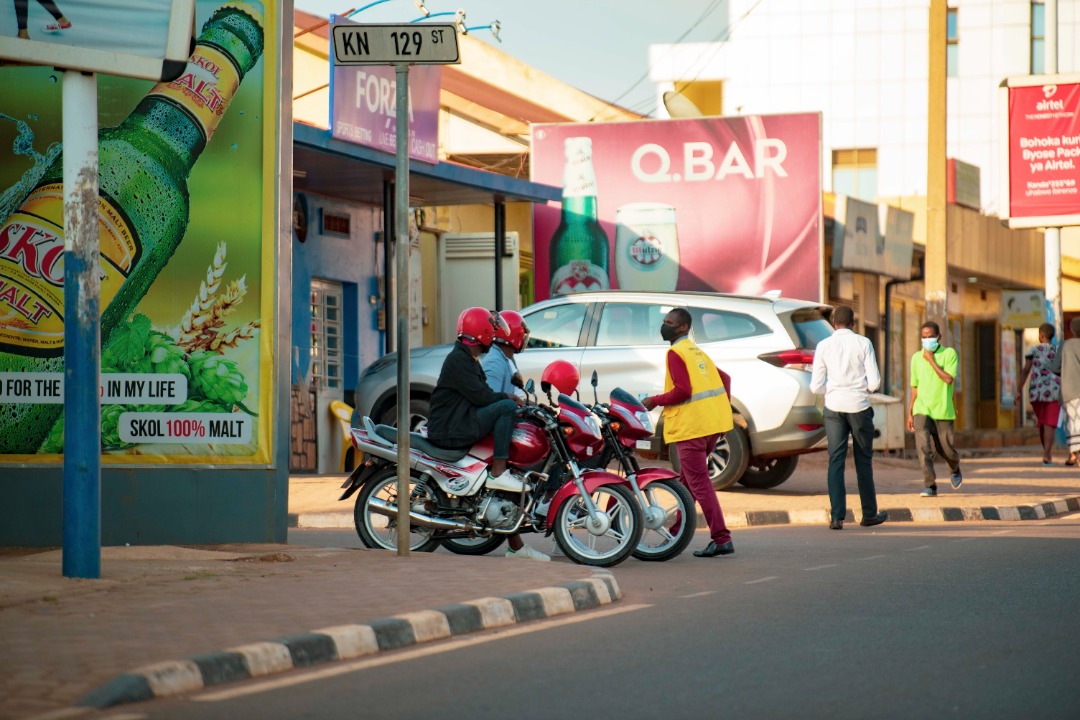
People wash hands in downtown Nyabugogo as the lockdown is lifted on August 1. Many will be hoping for more relaxed measures if the COVID-19 pandemic subsides.
It has been yet another busy year for the Government, particularly the cabinet, which has entered a two-week recess, which will end on August 31, as confirmed in a statement which followed an extraordinary meeting chaired by President Paul Kagame on Wednesday.
Since the COVID-19 outbreak, Governments around the world have been working around the clock for nearly two years now, each trying to minimize the impact of the New Coronavirus on their respective economies and the Rwandan government has not been an exception.
Every 15 days, Rwandans expect a ‘yellow paper’ containing new COVID-19 guidelines, which are reviewed twice in a month, depending on the current status of COVID-19, based on a nationwide assessment of the infections.
But as the cabinet takes a well-deserved break, what should be expected on September 1 when new measures are expected?
More Vaccines to be rolled out
According to a statement released by the Prime Minister, Dr. Edouard Ngirente, the Cabinet was briefed on ongoing COVID-19 testing and vaccination going on across Rwanda.
“It was noted that Rwanda was nearing 1 million vaccinations, including frontline workers and the most vulnerable. Appreciation was extended to partner states and organisations that have provided much-needed additional vaccines,”
“Cabinet thanked Rwandans for their valuable contribution to the management of the pandemic, urged all those eligible to get vaccinated as vaccines become more available, and also test more frequently in order to minimize the spread of COVID-19,” the statement reads.
Rwanda is counting on the arrival of more vaccines to ramp up the number of vaccinated people, which offers the only hope for containment of the virus and a promise of a full reopening in the near future.
Rwanda on Wednesday received the first shipment of 489,060 Covid-19 Pfizer vaccine doses from the United States Government as part of the United States Administration’s global efforts to fight the COVID-19 pandemic. The first batch consisted of 188, 370 doses.
Rwanda is also expected to receive 200, 000 doses of the Chinese vaccine, Sinopharm, today, donated by China, with both shipments expected to take the number of inoculated people well above the 1.2 million-mark.
Rwanda has so far vaccinated 961, 563, of which 397, 500 have got the second dose. The country is targeting inoculating all vital groups including the elderly and those with underlying conditions as well as people working in vital sectors where people meet day-to-day, as a way of containing the virus.

President Paul Kagame and Prime Minister, Dr. Edouard Ngirente chair a cabinet meeting on August 11.
Economic Recovery
As the economy continues to struggle from the impact of the COVID-19 pandemic, Rwanda is hoping to recover from the recession caused by the pandemic, with a projected upward trend in the coming months, as noted by the quarterly Monetary Policy Committee (MPC), which sat on August 17.
“The Rwandan economy continues to gradually recover from the 2020 recession caused by the COVID-19 pandemic as a result of sizeable fiscal and monetary policy measures. In 2021Ql, Rwanda’s real GDP grew by 3.5 percent after three consecutive quarters of contraction,” the National Bank of Rwanda (BNR) said Wednesday.
The Central Bank said the recovery in the first quarter of 2021 was mainly driven by a faster recovery in the agriculture sector, which grew by 6.8 percent from a decline of 0.5 percent recorded in 2020Q, and the industry sector with a growth of 9.7 percent from 1.9 percent over the same period.
The Government is hoping to use the $620 million recently raised through a 10-year Eurobond at a 5.5% interest rate. The cabinet meeting was updated on the bond which was oversubscribed at $1.6 billion, demonstrating investor confidence in Rwanda’s economy and governance.
The cabinet said the amount raised will continue to spur the economic recovery and sustainable development.
Declining numbers?
As expected, the new guidelines will largely depend on how the COVID-19 numbers at the time when the cabinet gets out of recess. Though daily numbers had in recent days relented towards 400, current figures suggest that an average of between 400 and 500 new cases could remain in the next few weeks.
On August 16, 435 new cases were registered and the next day, on August 17, the numbers went up again to 557 while on Wednesday when the Cabinet went into recess, the number of new cases increased to 635. However, with the weekly positivity rate still lingering below 5%, it is hoped that numbers will continue to relent but time will tell.
Sectors Awaiting Reopening
With the number of vaccinated people going up and COVID-19 infections relenting, several sectors of the economy are hoping for full or scaled up reopening to sustain operations, especially in the service sector.
With restaurants still operating at 30% and most outdoor activities limited, business owners are hoping to see the next cabinet increase the number of people in restaurants and wedding venues to 50% but that will depend on the status of COVID-19 at the beginning of September.
Bar owners and the gaming service industry are also hoping for a reprieve as football leagues and other sporting activities reopen across the world.
Players in the gaming industry are confident that the next cabinet meeting will ease up on the restrictions as it did in May, to allow the gaming industry to reopen in time to take advantage of football leagues particularly in Europe, which resumed this month.

‘Moto’ taxi operators wait for passengers in front of a bar and betting shop in Remera. Bars and Gaming businesses remain closed.
Rwanda, like many Sub-Saharan countries is counting on the vaccine roll out as one of the ways to resuscitate the economy, as more vaccines become available. According to the Central Bank, the low recovery rate in Sub-Saharan Africa is partly due to the limited access to vaccines.
For the first time in the last 25 years, Sub-Saharan Africa experienced a recession in 2020, with GDP contracting by 1.8 percent. This year, Sub- Saharan Africa’s economy has started showing a good recovery, with a projected growth of 3.4 percent in 2021and 4.1 percent in 2022.
“However, despite the projected economic rebound in 2021 that reflects positive spillovers from strengthening global economic activity, Sub-Saharan Africa remains the slowest growing region in 2021,”
“That is mainly due to lower access to vaccines, limited fiscal space, and weak monetary policy transmission mechanisms.” BNR said.

